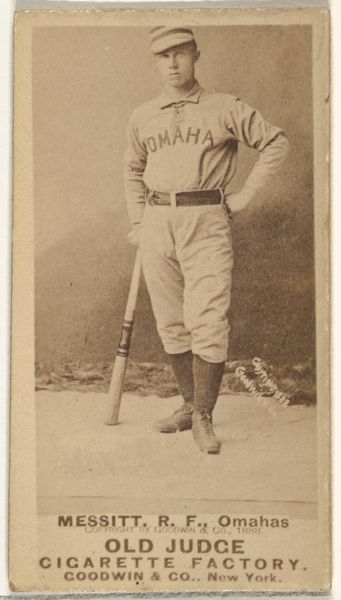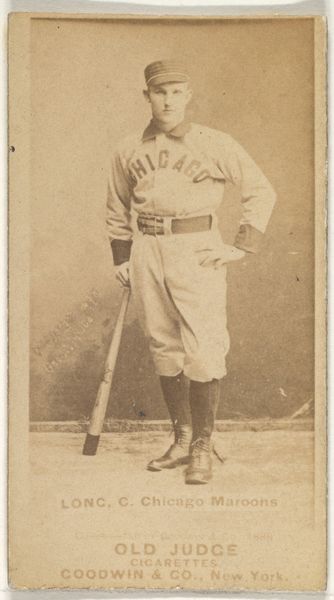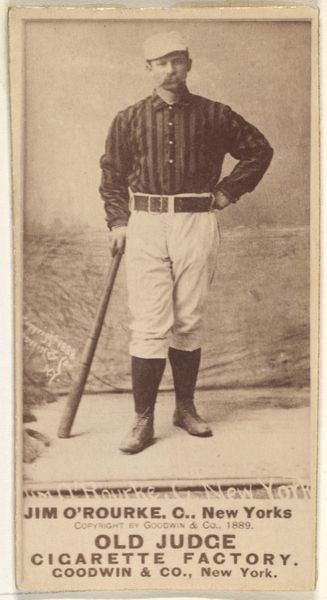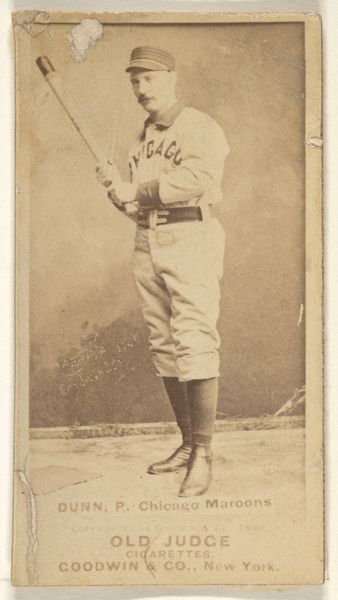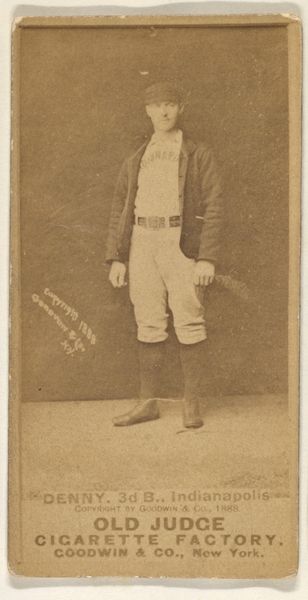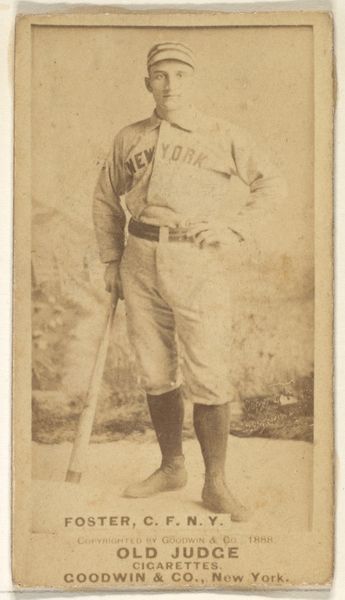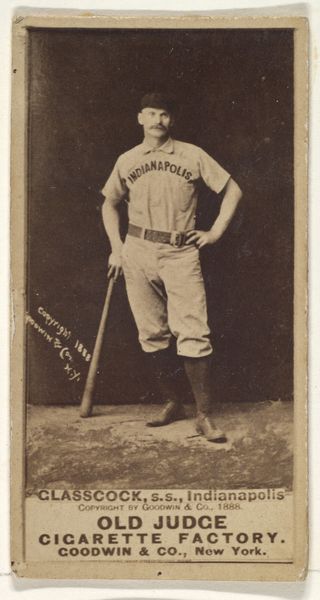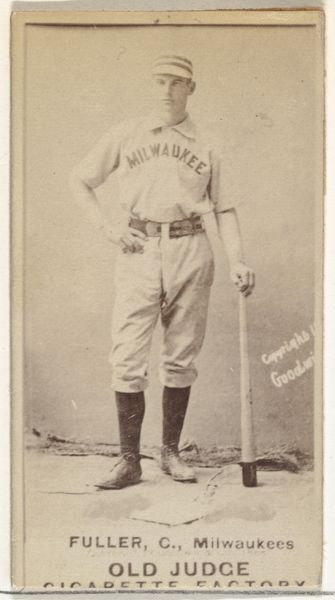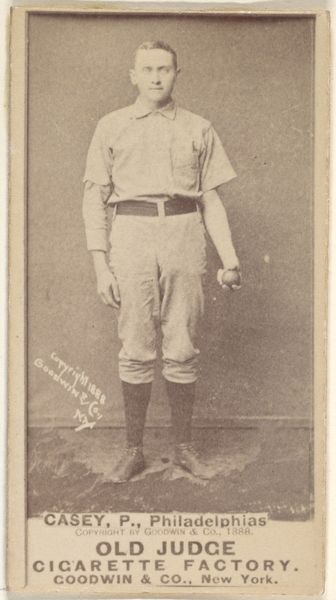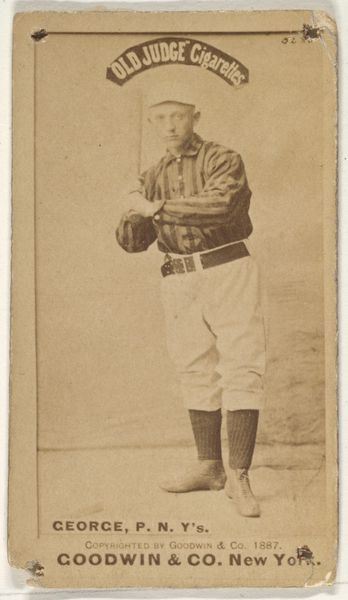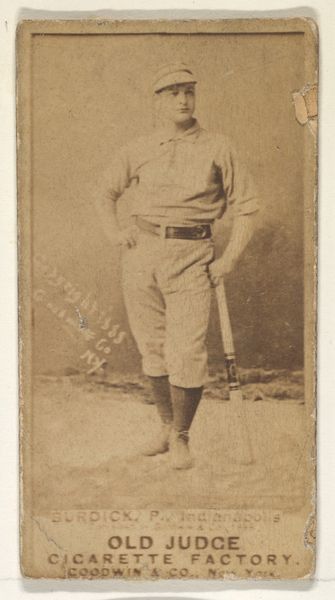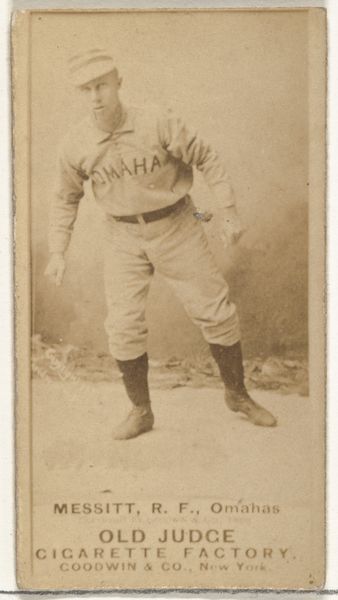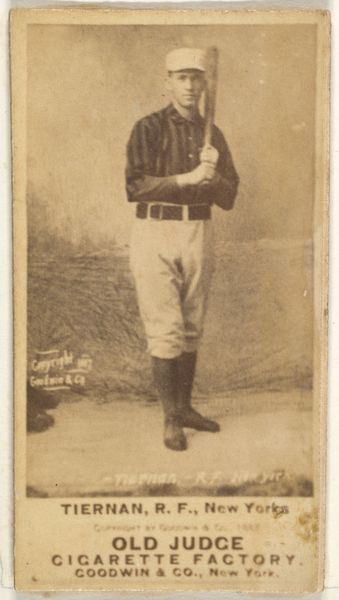
Doran, 3rd Base, Omaha Omahogs/ Lambs, from the Old Judge series (N172) for Old Judge Cigarettes 1888
0:00
0:00
drawing, print, photography, albumen-print
#
portrait
#
drawing
# print
#
baseball
#
photography
#
19th century
#
men
#
athlete
#
albumen-print
Dimensions: sheet: 2 11/16 x 1 3/8 in. (6.9 x 3.5 cm)
Copyright: Public Domain
Editor: So, this is "Doran, 3rd Base, Omaha Omahogs/Lambs," an albumen print from the "Old Judge" series made in 1888. What strikes me is the stark sepia tone and the way it flattens the image. The texture almost seems to dissolve some of the details. What catches your eye in terms of form? Curator: Initially, the composition strikes me as rather conventional for portraiture of the period, with its focus on symmetry and balanced space. Doran is centered, grounded by the vertical thrust of his baseball bat. Yet, look at the subtle tonal variations; the almost monochromatic scale establishes a certain mood, don't you think? Editor: Yes, almost like a nostalgic fog. Curator: Precisely. Notice, also, the texture; its gentle granularity. I see how it might seem to erase details. In what ways might that serve the work's effect? Is it simply aesthetic, or might it speak to larger issues concerning representation and historical distance? Editor: Well, it does make the image feel aged, more like a memory than a snapshot. So maybe it softens reality, making it feel less immediate and more like an idea of baseball and Doran. Do you think the photographer chose that method consciously? Curator: That's a complex question. Can we truly ascertain the intentionality of an artist or photographer long after the fact? However, analyzing the structural components – the tone, texture, and composition – illuminates how meaning is generated, even if definitive answers regarding intention elude us. It forces us to contemplate the effect the piece has regardless of its intention. Editor: That makes sense. Thinking about it formally gives me a fresh way of understanding its visual impact. Curator: Indeed. By closely analyzing the image itself, we uncover rich avenues for understanding its aesthetic and communicative power. I'm eager to revisit this approach for future interpretations of similar works.
Comments
No comments
Be the first to comment and join the conversation on the ultimate creative platform.
